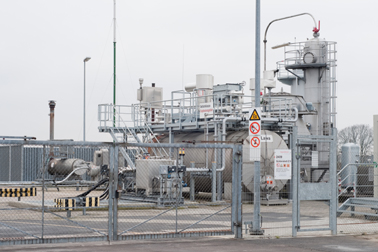
By TreeLiving
Not long ago few had heard of it. Today fracking, or hydraulic fracturing, is a hot topic. Fracking is a technique used to release untapped fossil fuels, in particular natural gas, from deeply buried rock layers in the earth’s surface. It’s a controversial practice, hailed by some as the green solution to fuel shortages and high gas prices but condemned by environmental activ ists as ecologically unsound.
Shale is a sedimentary rock that was laid down as mud, often rich in organic materials, that over millions of years has converted to gas. This gas can be released by boring wells that can reach to depths of around 3 kilometres (1.86 miles). Fracturing the rock is done by pumping in a slurry of water sand and chemicals under high pressure. The gas that is released is then tapped and stored.
Fracking has become big business, with the US, China, Argentina and Mexico leading world exporters of gas. In the US alone it accounts for about 25% of the gas industry and has helped cut gas prices by a quarter in the last few years. With demand for gas rising and oil shortages, it seemed like an answer, but the potential environmental impact is causing huge concern worldwide.
Initial concerns focused on the chemicals used in fracking contaminating reservoirs of drinking water. Far more worrying is the fact that fracking can trigger earth tremors and even earthquakes. Fracking in the United Kingdom recently caused tremors that were measured at 1.5 and 2.3 on the Richter scale. Most tremors are barely noticeable, and experts agree that fracking isn’t likely to trigger massive quakes, but the US Geological survey has suggested that a documented increase in small earthquakes in the US may be partly due to fracking.
Critics of fracking point to the fact that the larger part of the chemical-laced slurry forced into the ground to create fracturing never comes out again. Where does it go? What guarantees are there that water will not be contaminated, even though the reservoirs are usually much closer to the surface? What about methane released into the atmosphere by fracking? Can the companies and countries that are turning substantial profits be fully trusted not to skew their figures, placing environmental safety second to business?
Residents of Wyoming recently complained that fracking had polluted their groundwater, which reeked of chemicals. In 2011 the US Environmental Protection Agency released the results of a preliminary investigation, concluding that chemical by-products (such as hydrocarbons) may indeed have contaminated the local water in this specific case. Setbacks that seem to support the case made by environmental activists have not deterred the companies and governments who champion fracking, though safety monitoring is continually being tightened up.
The jury is still out on the safety and effects of fracking, but there is, of course, also an underlying issue: a world in which technology, lifestyles and economic growth push energy consumption and demand up higher and higher every year. Whatever the final conclusions on the environmental impact of fracking, and what environmental cost might be deemed acceptable, ultimately it is human demand that is driving the problem – and that requires another kind of solution.

